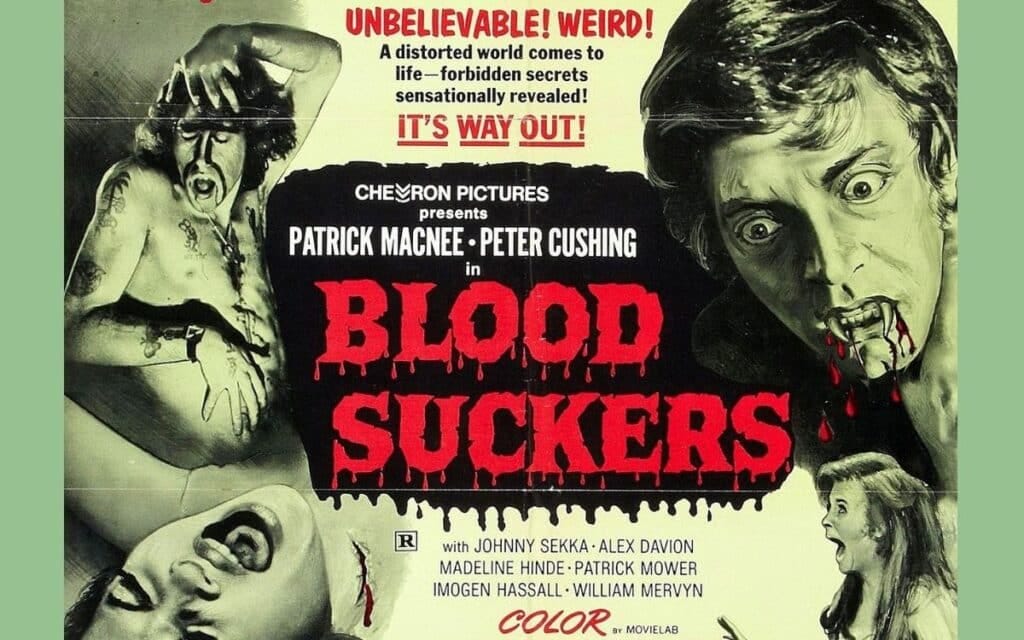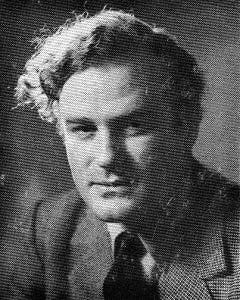A certain remake directed by Robert Eggers has everyone discussing vampires again. The newest version of Nosferatu is a wonderful film that eschews the cheap sensationalism and meta-irony of most Dracula adaptations in favor of cold, gothic Expressionism dripping with occultism and perverse sexuality. The latter element is strongest in the Ellen character (played by Lily-Rose Depp), a somnambulist whose bitter loneliness and isolation causes her to become enthralled to an evil Solomonar named Count Orlok (played to perfection by Bill Skarsgård). Sex and death (or rather un-death) are the witch’s brew of every good vampire story, and Nosferatu is no different.
Decades before, in the relatively placid year of 1960, a little novel called Doctors Wear Scarlet made a similar association between vampirism and female sexuality, specifically the decadent sexuality of a female sadist. Author Simon Raven, who had earlier ruffled feathers by writing novels that frankly discussed homosexuality within the British Army, set out to deliberately shock his audience with his tale of the unfortunate Richard Fountain. Many readers were duly horrified, but one, Karl Edward Wagner, loved the book so much that he listed it as one of the Thirteen Best Supernatural Horror Novels in his 39 List.
There’s just a minor issue, though. Doctors Wear Scarlet is not a supernatural novel. Yes, it is a vampire story, but just not that kind of vampire story. No native soil or bats need apply; Raven’s masterpiece is great horror without the speculation.
Set mostly during the hot summer of 1957, Doctors Wear Scarlet opens with a visit from a police inspector to the home of a gentleman-scholar named Anthony Seymour. Inspector Tyrrel, who is much more intelligent and well-read than the average copper, informs Seymour that his old school chum, Richard Fountain, is in a spot of bother in Greece. Tyrrel is reticent about the details, and his chief concern is to know as much as possible about Fountain. Seymour obliges, and he tells the gumshoe three important facts: 1) Fountain is a brave man who defeated a hostile African tribe during his National Service with the army; 2) Fountain has a vicious streak, and this streak first manifested itself in adolescence when he brutalized a bully for picking on a portly Jewish student; and 3) Cambridge provost Doctor Walter Goodrich is Fountain’s self-appointed mentor, and Goodrich believes it is his mission to oversee not only Fountain’s career as a Classics scholar, but also his life as the future husband to his daughter Penelope.
Inspired by Tyrrel’s menacing commentary, Seymour journeys to Cambridge, where he investigates Fountain—his academic career, his friends, and his interests. We learn that Fountain is close to an impish undergraduate named Piers Clarence. Rumor has it that Piers and Richard are homosexual lovers, but this is not true. They are merely best buds. Seymour also meets with Major Derek Longbow, who fills Seymour in on Fountain’s years in the army, as well as the situation in Greece. Seymour also chats with Marc Honeydew, who has a lot to say about Fountain’s growing distaste for Dr. Goodrich’s demands on his life. In short, it is proven that Richard Fountain is a brilliant scholar and something of a loner. His interests lie in paganism and the secretive cults of the Hellenic world. He is a published poet, and it is believed by all that his year-long stay in Greece will result in a celebrated book.
But the dark rumors prove too strong to ignore. Something is seriously amiss in Crete, where Richard has more or less disappeared in the labyrinthine ruins of the Palace of Minos. The impromptu search and rescue party consists of Seymour, Clarence, and Longbow. Their journey takes them from Crete to the primordial Saronic Islands. One such island, Idra, is a vortex of black rumors, most of which concern its parent city of Hydra. Once upon a time in antiquity, the hero Hercules not only slew the many-headed serpent of Hydra, but he also raised the city to the ground and scattered its inhabitants to the four winds. Hercules did so out of righteousness, for the citizens of Hydra were practitioners of the worst rites imaginable. These rites were set underground until they eventually materialized again on Idra. Despite the best efforts of the Greek Orthodox Church, these blasphemous rites continued in secret. One of the victims of this religion is Richard Fountain, who is found drained and barely alive inside of an old Venetian fort.
Richard’s illness has a name, and that name is Chriseis. She is a beautiful and enchanting Greek woman whom Richard first met in Corinth. All the local Greeks fear her, and it is repeated again and again that Chriseis is a walking bad omen. Seymour finds this out for himself when he awakes one night to find the black-clad Chriseis feasting upon Richard’s neck! The bloodrinker Chriseis is quickly dispatched (see: killed), and Richard is rushed back to England via a circuitous route. Eventually, he and the party sans Longbow, who died horribly in the Greek darkness, return to Cambridge.
The plan is to keep Richard calm and mentally occupied. This is recommended by the strange Dr. Erik Holstrom, who enlightens Seymour about Richard’s condition from the confines of his bleak basement office. Dr. Holstrom tells Seymour and Tyrrel that Chriseis was a psychological vampire—a lustful woman whose abnormal sexuality required both blood and a weak-willed man to be fulfilled. Richard, who went to Greece in the hopes of curing his impotency, discovered that he enjoyed the masochistic thrill of being devoured and watching Chriseis devour others (including two children). Dr. Holstrom warns that Richard is not fully recovered and could revert back to psycho-sexual vampirism. His friends do their best, but Doctors Wear Scarlet ends in a Michaelmas feast like no other—a feast of Cambridge academics that ends with two stakes and a coroner’s inquest.
Doctors Wear Scarlet is everything but subtle. Raven’s novel must have been downright obscene in 1960, and its lurid descriptions of aberrant sexuality came several years before the advent of the Swingin’ Sixties. Still, the novel is a timid schoolboy compared to the 1971 film adaptation. Alternatively titled Bloodsuckers and Incense for the Damned, the film version contains a nearly ten-minute-long orgy scene that has more tits than a birdfeeder. It is a film so bad that its director disowned it. Even the great Peter Cushing could not salvage the stinker. Anyway, Bloodsuckers merely turns up the temperature on an already hot number. Doctors Wear Scarlet is a stylish, hyper-sexualized, and pop Freudian reimagining of the vampire tale. It set a trend too, for later books, most notably Tim Lucas’s bizarre Throat Sprockets, have likewise taken vampires out of the coffin and placed them in the bedroom and the dirty porno theater. Doctors Wear Scarlet did it first, and Raven’s novel is an exquisite and enjoyably English take on psycho-sexual phenomena. After a slow early going, this book races towards its shocking conclusion, and few characters in horror literature are as relatable as the troubled and dominated Richard Fountain.
But it’s still not a supernatural tale. Don’t know what old Karl was thinking.
4.6 out of 5.





